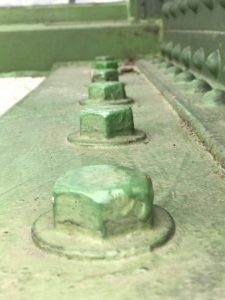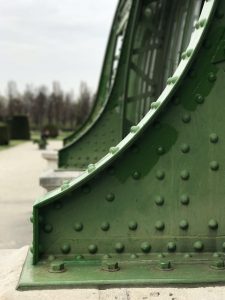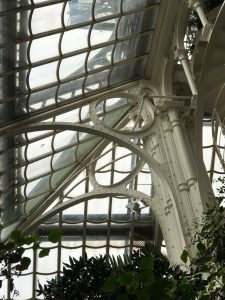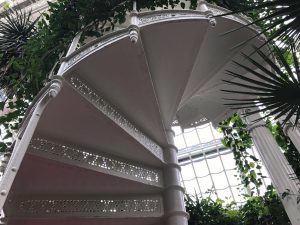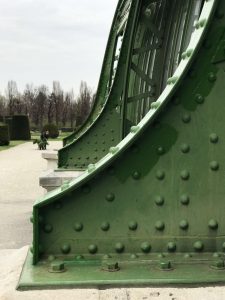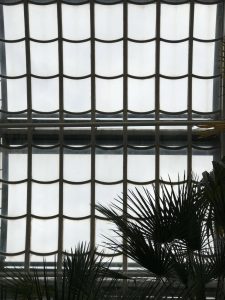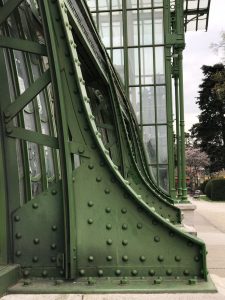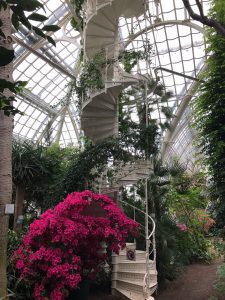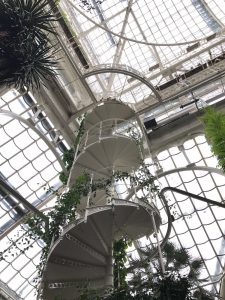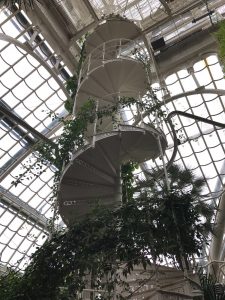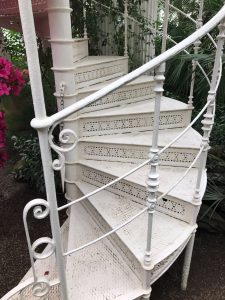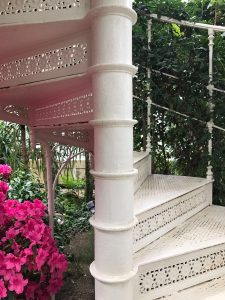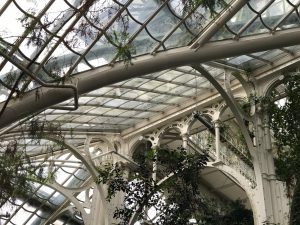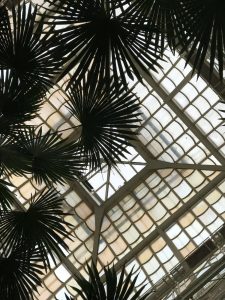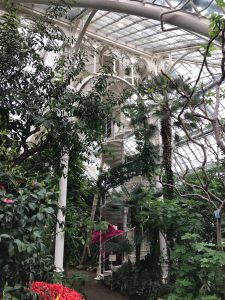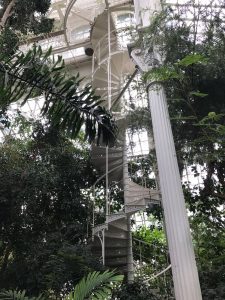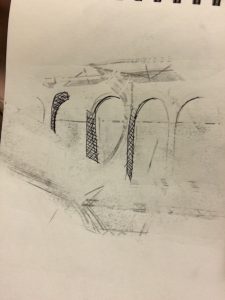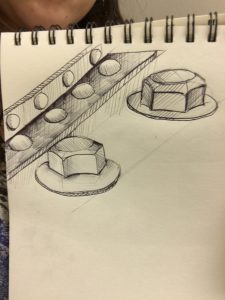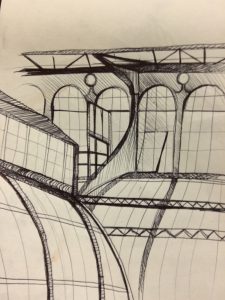Greenhouses
For my foster development of my topic, I have visited two greenhouses from the 18th century in vienna. When observing these structures, I became more and more interested in their volume and how so much material can be held up into space, creating such a preponderence of free area.
So I started observing the detailing around the structure, as well as metal works, such as poles and staircases, which help hold the structuce in place and support it. Hence I started taking great amount of images and photographs from the sights i visited. I then started to explore their structure (the structure of the sight within the photograth) using drawing techniques. I created various drawing, using methods like crosshatching and schading to create a contrast between light and dark areas as well as create a composition. Furthermore, I then also explored using illustrator when developing this process. Also, when mentioning a sense of composition, I had previously further explored doing so when taking photographs, to distinquish the most interesting angles to form a successful composition which would transfere well onto other techniques like drtawing but also stand by itself.
research sources:
sights:
the ‘Schmetterlingshaus’ is a greenhouse for butterflies and palmtrees from the 18th century located in vienna, in the royal gardens of schloss Belvedere
More information about the Schmetterlingshaus (butterflyhouse) can be found here:
http://www.schmetterlinghaus.at/en/
‘the Palmenhaus’ is a greenhouse for palm trees from the 18th century located in vienna, in the royal gardens of schloss schönbrunn
More information about this sight can be found here:
https://www.schoenbrunn.at/ueber-schoenbrunn/schlosspark/rundgang/palmenhaus/
Books:
– ”Comprehensive guide to building Greenhouses”
‘Greenhouses are sources of continuous throughout-a-year food production. They provide ideal conditions for growing plants for own or commercial use. This book is a guide that shows how to plan, organize resources and build your own greenhouse. It contains a step by step illustrated guide for building small size cold frames, small to large scale PVC greenhouses and glasshouses.’ (amazon critiques: source: Comprehensive guide to building Greenhouses)
– ”The Urban Farmer”
‘There are twenty million acres of lawns in North America. In their current form, these unproductive expanses of grass represent a significant financial and environmental cost. However, viewed through a different lens, they can also be seen as a tremendous source of opportunity. Access to land is a major barrier for many people who want to enter the agricultural sector, and urban and suburban yards have huge potential for would-be farmers wanting to become part of this growing movement.’ (source: amazon critiques: the urban farmer )
Further Research Questions:
-is it more sustainable to generate food in greenhouses or on plantages? – how does it influence the production of CO2 etc.
-How does one build a greenhouse, what materials are used and how does the technical side work?
-what would be other options to incorporate greenhouses into our food production in a way that is great for the environment but also sustainable economically?
-why havent greenhouses been used for food production in a greater scale to this point in time ?
-man vs. machine (manmade/machine-made)
IMAGES (PRIMARY SOURCE _ PHOTOGRAPHED BY ME)
Drawings:
Illustrator:
PART 2: in another blog post – link here:



